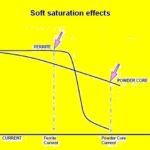UV radiation in the 200 to 300-nm range (dubbed the UV-C range) can destroy viruses, including the coronavirus. Problem is, doing so requires UV radiation sources putting out sufficiently high doses of UV light. That typically means using a relatively expensive mercury gas discharge lamp. It’s possible to find sources employing LEDs that put out UV-C, but the light they put out is typically weak, too weak to do much good for disinfection purposes. One reason: Their light emission is complicated by the fact that their electrode material must also be transparent to UV-C.
“There is currently no good solution for a UV-transparent electrode,” said Joseph Roth, doctoral candidate in Materials Science and Engineering at Penn State. “Right now, the current material solution commonly employed for visible light application is used despite it being too absorbing in the UV range. There is simply no good material choice for a UV-transparent conductor material that has been identified.”

A team of researchers at Penn State, collaborating with materials theorists from the University of Minnesota, are trying to solve the LED electrode problem. They think the solution might be found in a recently discovered new class of transparent conductors. When theoretical predictions pointed to the material strontium niobate. Early results looked promising, but the researchers needed a deposition method for putting strontium-niobate films on semiconductor devices in a scalable way.
“We immediately tried to grow these films using the standard film-growth technique widely adopted in industry, called sputtering,” Roth said. “We were successful.”
Researchers say the ability to sputter strontium-niobate films is a critical step towards technology maturation which makes it possible to integrate this new material into UV LEDs at low cost and high quantity.
“While our first motivation in developing UV transparent conductors was to build an economic solution for water disinfection, we now realize that this breakthrough discovery potentially offers a solution to deactivate COVID-19 in aerosols that might be distributed in HVAC systems of buildings,” Roth explains. Other areas of application for virus disinfection are densely and frequently populated areas, such as theaters, sports arenas and public transportation vehicles such as buses, subways and airplanes.
The group’s findings appear in the Nature Group publication Physics Communications. Co-authors along with Roth are Penn State associate professor Roman Engel-Herbert, Yoonsang Park, Alexej Pogrebnyakov and Venkatraman Gopalan of Penn State; Daichi Oka of Tohoku University; Yasushi Hirose and Tetsuya Hasegawa of the University of Tokyo; and Arpita Paul and Turan Birol of the University of Minnesota. The paper, titled “SrNbO3 as a transparent conductor in the visible and ultraviolet spectra,” is accessible here.






How does this discovery relate to USEFUL and EFFECTIVE products that I can buy today?That is the big question.